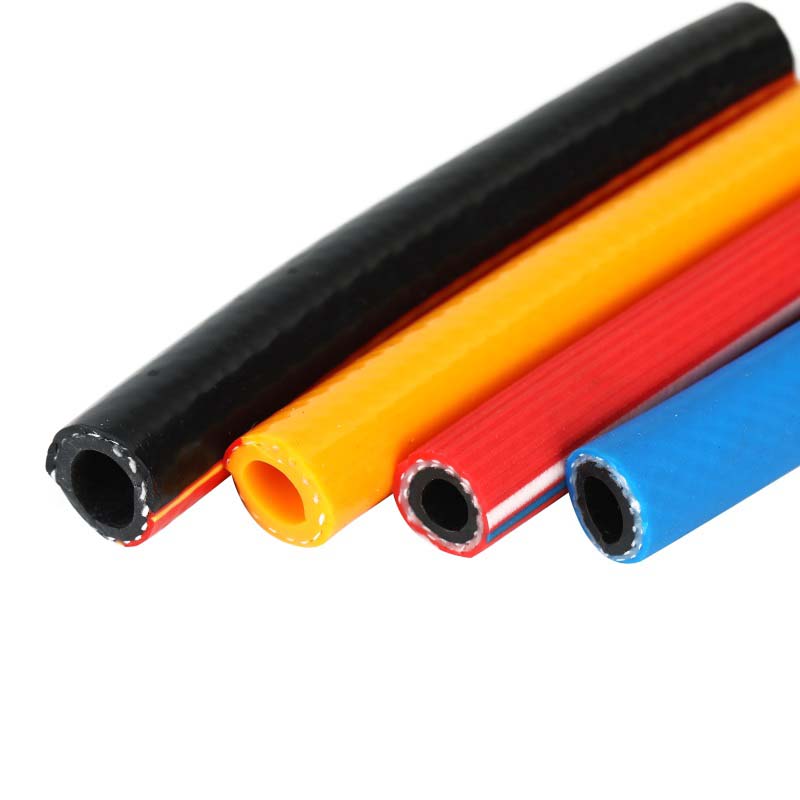Exploring Various Materials for Pneumatic Tubing Applications and Their Impact on Performance
Understanding Pneumatic Tubing Materials
Pneumatic tubing plays a crucial role in the operation of pneumatic systems, which are widely used in various industries, including manufacturing, automation, and robotics. The choice of tubing material can significantly impact the performance, reliability, and efficiency of these systems. In this article, we will explore the various materials used for pneumatic tubing, their advantages and disadvantages, and the factors to consider when selecting the right tubing for your application.
Common Materials for Pneumatic Tubing
1. Polyurethane (PU) Polyurethane tubing is one of the most popular materials used in pneumatic systems. It is lightweight, flexible, and offers excellent abrasion resistance, making it ideal for applications that require movement or bending. PU tubing is also resistant to chemicals and has low moisture absorption, allowing it to perform well in diverse environments. However, it may not be suitable for high-temperature applications, as it can lose its shape and performance under extreme heat.
2. Polyamide (Nylon) Polyamide, commonly known as nylon, is another commonly used material. Nylon tubing is known for its high strength and durability, which makes it suitable for high-pressure applications. It has good chemical resistance and can withstand a wider range of temperatures compared to polyurethane. However, nylon is less flexible than PU, which can limit its use in applications where tight bends are required. Additionally, nylon can be susceptible to moisture absorption, which can affect its performance over time.
3. Polyvinyl Chloride (PVC) PVC tubing is widely used due to its cost-effectiveness and versatility. It is generally rigid and has good chemical resistance, making it suitable for various applications. However, PVC may not be as flexible as PU or nylon, limiting its use in situations requiring movement. Moreover, PVC is less resistant to UV light and can degrade if exposed to direct sunlight for extended periods.
4. Silicone Silicone tubing is known for its extreme flexibility and high-temperature resistance. It is ideal for applications where flexibility is essential, such as in dynamic systems. Silicone is also resistant to ozone and UV light, making it suitable for outdoor applications. On the downside, silicone tends to be more expensive and may not have the same pressure ratings as some of the other materials.
Key Considerations for Selection
pneumatic tubing material

When selecting pneumatic tubing material, there are several factors to consider
- Application Requirements Determine the specific needs of your application, including pressure ratings, temperature ranges, and chemical exposure. Each material has its strengths and weaknesses, so understanding these requirements is crucial.
- Flexibility vs. Rigidity Depending on the system design, you may need flexible tubing for dynamic applications or more rigid tubing for fixed installations. Consider the movement and positioning of the tubing in your system.
- Chemical Compatibility Evaluate the substances that the tubing will be exposed to, as certain materials may degrade or react negatively with specific chemicals
.- Cost and Availability While performance is essential, budget constraints may also play a role. Compare the costs of different materials and consider their availability in your region.
- Durability and Maintenance Lastly, consider the long-term performance and maintenance requirements of the tubing. Some materials may require more frequent replacements, while others may offer a longer lifespan with minimal maintenance.
Conclusion
The choice of pneumatic tubing material is vital for ensuring the efficiency and longevity of pneumatic systems. With options like polyurethane, nylon, PVC, and silicone available, each material offers unique benefits and limitations. By carefully assessing your application's requirements and considering factors such as flexibility, chemical compatibility, and cost, you can make an informed decision that will enhance the performance of your pneumatic system.
-
Top Quality Oxy Acetylene Hoses for Sale Fit for Welding DemandsNewsJul.28,2025
-
The Future of Pneumatic Air Tubes in IndustryNewsJul.28,2025
-
Superior and Reliable LPG Hose Pipe Solutions for Every NeedNewsJul.28,2025
-
Exceptionally Durable and Versatile Premium Braided PVC TubingNewsJul.28,2025
-
Best Adapters for Connecting Garden Hose to PVC Pipe ConnectionsNewsJul.28,2025
-
The Essential Role of LPG Hoses in Safe and Efficient Gas DistributionNewsJul.16,2025














